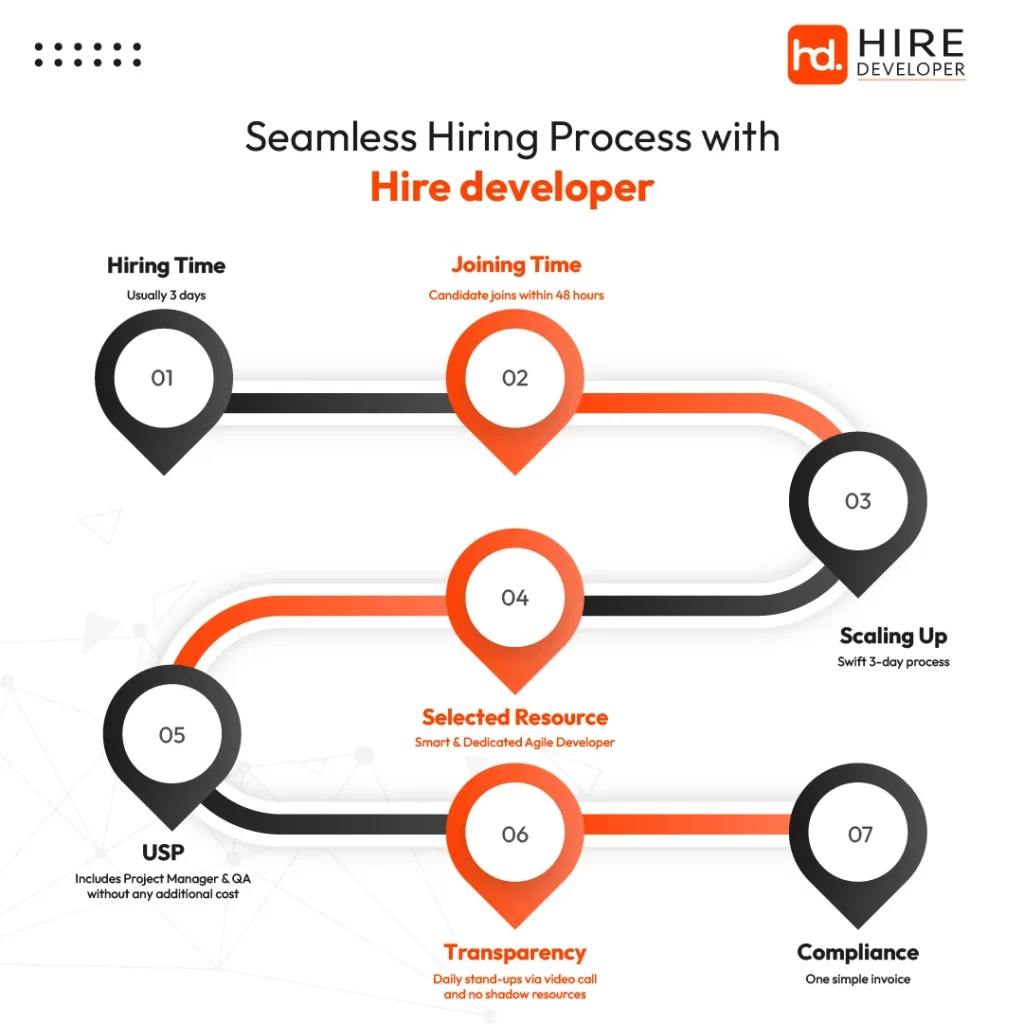In this digital world, businesses are constantly seeking ways to innovate and stay ahead of the competition with digital transformation. Due to this, the requirement for on-demand web development and mobile app development is a buzz. And so the demand for developers skyrocketing with the huge cost of software development. One of the most effective strategies for achieving this is by opting into the global talent pool of remote developers. This blog post will guide you through the ways to reduce development costs by hiring remote developers, and some other ways to reduce cost with a focus on balancing cost-effectiveness and quality.
Understanding Remote Developers
Remote developers are software professionals who work outside of your geographic proximity and can be located globally. They are often often work from their homes or co-working spaces. They collaborate with teams and clients across different time zones and geographical locations using various digital tools and platforms. These resources are usually freelancers, contractors, dedicated remote teams, or even company employees operating from a distinct location. The rise of remote work has opened up a world of possibilities for businesses looking to expand their development capabilities. By hiring remote developers, companies can access diverse skills and expertise without being limited by geographical constraints.
Cheaper Price Without Compromising Quality
One of the most lucrative aspects of hiring remote developers is the potential for significant cost savings. However, many businesses worry that lower costs might equate to lower quality. This doesn’t have to be the case when you follow certain precautions and choose top-ranked service provider like Hire Developer.
When you hire remote developers, especially from countries with lower cost of living, you can often get high-quality work at a fraction of the cost you’d pay for local talent. Countries like India, for example, have a large pool of highly skilled developers who can deliver excellent results at competitive rates.
The key to ensuring quality while keeping costs low is to:
- Thoroughly vet potential candidates
- Implement clear communication channels
- Set up robust project management processes
- Invest in proper onboarding and training
By following these steps, you can build a high-performing remote development team that delivers quality work without breaking the bank.
Why Software Costs Overrun?
Before we delve into the hiring process, it’s important to understand why software development costs often exceed initial estimates. This knowledge can help you better manage your remote development projects and avoid unexpected expenses. Some measures are as follows:
Common reasons for software cost overruns include:
- Scope creep: When project requirements change or expand during development
- Poor estimation: Underestimating the complexity of tasks or the time required
- Communication issues: Misunderstandings between team members or with clients
- Technical debt: Shortcuts taken during development that require more work later
- Unforeseen technical challenges: Unexpected problems that arise during development
By being aware of these potential pitfalls, you can take proactive steps to mitigate them when working with remote developers.
Important Suggestions to Overcome Software Cost Overrun
- Concentrating on managing strategy and stakeholders rather thanf exclusively concentrating on project budget and scheduling
- I am mastering technology and project content by securing critical internal and external experts.
- Building effective teams by aligning their incentives with the overall goals of projects
- Excelling at core project-management practices, such as short delivery cycles and rigorous quality checks
Seamless Hiring Process with Hire Developer
Now, let’s explore how you can streamline your hiring process to find the perfect remote developers for your project. At Hire Developer, we’ve refined our process to make it as efficient and effective as possible.

3-day Hiring Process: Our hiring process typically takes just 3 days, allowing you to quickly find the talent you need.
Candidate Joining time within 48 hours: Once selected, candidates can join your team within 48 hours, minimizing delays in your project timeline.
Selected Resource – Smart & Dedicated Agile Developer: We understand the importance of agility in today’s fast-paced business environment. That’s why we focus on providing smart and dedicated Agile Developers who can adapt quickly to your project needs and methodologies.
No additional cost on Project manager & QA: Our unique selling proposition includes a Project Manager and QA specialist at no additional cost. This ensures that you have a complete team working towards the success of your project.
Transparency is key in remote work, which is why we facilitate daily stand-ups via video calls. This keeps everyone aligned and allows for quick problem-solving. We also maintain a strict no shadow resources policy, ensuring that the developers you hire are the ones working on your project.
One simple invoice: To simplify your administrative processes, we provide one straightforward invoice, making compliance and accounting easier for your business.
This seamless hiring process allows you to quickly scale up your development capabilities without the usual headaches associated with recruitment and team management.
Best Practices for Working with Remote Developers
To make the most of your remote development team, consider implementing these best practices:
- Set clear expectations: Clearly define project goals, timelines, and deliverables
- Use project management tools: Implement tools like Jira or Trello to track progress
- Schedule regular check-ins: Hold daily or weekly meetings to discuss progress and address issues
- Foster a culture of open communication: Encourage team members to speak up about challenges or ideas
- Provide necessary resources: Ensure your remote team has access to all the tools and information they need
- Recognize and reward good work: Acknowledge and appreciate the efforts of your remote team members
Overcoming Common Challenges
While hiring remote developers offers numerous benefits, it’s not without its challenges. Here are some common issues you might face and how to address them:
- Time zone differences: Use overlap hours effectively and be flexible with meeting times
- Cultural differences: Promote cultural awareness and sensitivity within your team
- Maintaining team cohesion: Organize virtual team-building activities and encourage informal communication
- Ensuring productivity: Use time-tracking tools and focus on outcomes rather than hours worked
- Data security: Implement robust security protocols and provide necessary training
The Future of Remote Development
As technology continues to evolve and remote work becomes increasingly normalized, the landscape of software development is likely to change. We can expect to see:
- More sophisticated collaboration tools
- Increased use of AI and machine learning in development processes
- Greater emphasis on cybersecurity in remote work setups
- Rise of hybrid work models combining remote and on-site work
- Continued growth of the global talent pool
By embracing remote development now, you’re not just solving immediate needs but also preparing your business for the future of work.
Conclusion
Hiring remote developers can be a game-changer for businesses looking to boost their development capabilities while managing costs. By understanding the nuances of remote work, implementing a streamlined hiring process, and following best practices, you can build a high-performing remote development team that drives your business forward.
Remember, the key to success lies in finding the right balance between cost-effectiveness and quality. With careful planning and the right approach, you can tap into a global talent pool of skilled developers who can deliver excellent results without breaking your budget.
Are you ready to take your software development to the next level? Consider exploring the world of remote developers and see how it can transform your business. The future of work is here – are you prepared to embrace it?









